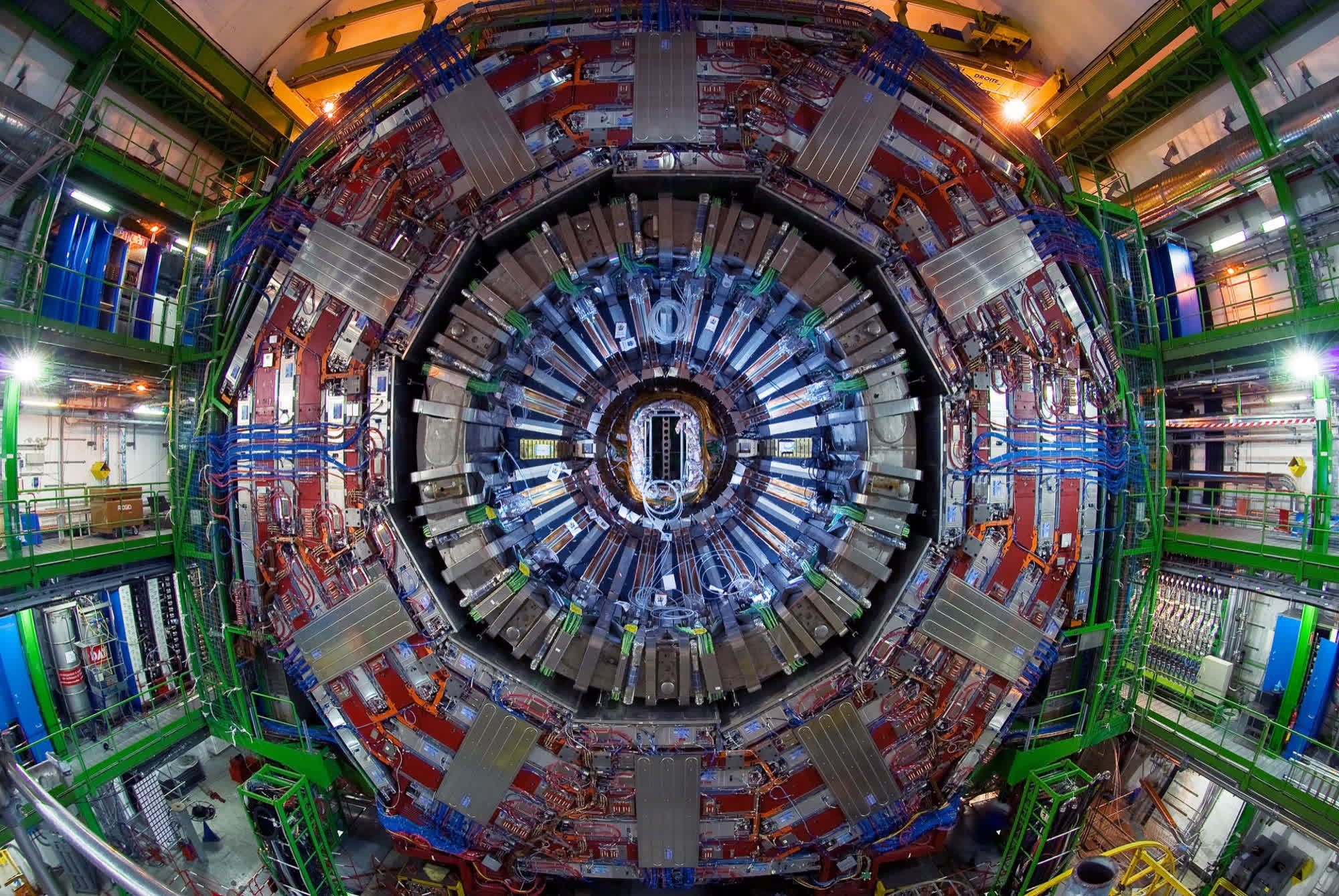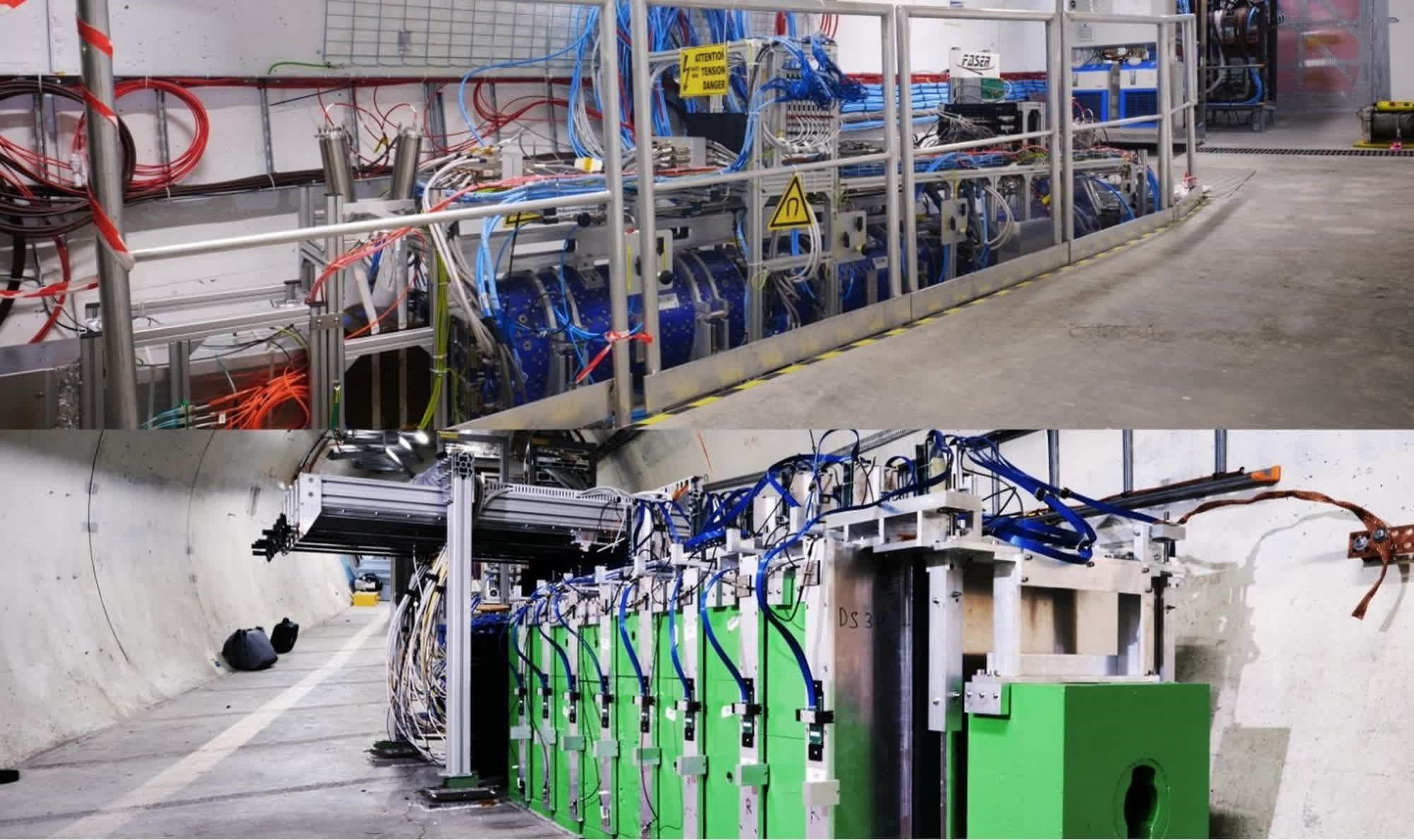In context: Neutrinos are elementary particles that do not interact with regular matter. They are electrically neutral and possess the smallest rest mass among other elementary particles (excluding massless ones like photons). Needless to say, they are extremely challenging to 'capture' and detect through experiments.

For the first time, two research collaborations at CERN's Large Hadron Collider have achieved a long-standing goal in the history of particle accelerators: observing neutrinos inside a collider. Neutrinos are among the most abundant particles in the universe, but the likelihood of these wandering cosmic particles interacting with traditional matter is exceedingly low.
According to Cristovao Vilela, a researcher who participated in the new experiments, neutrinos are also produced 'abundantly' in proton colliders like the LHC. Although these neutrinos have never been directly observed before, the experiments known as FASER (Forward Search Experiment) and SND (Scattering and Neutrino Detector)@LHC have successfully done so by employing two distinct approaches.
The FASER collaboration is a significant research effort aimed at observing light and weakly interacting particles, such as neutrinos. In contrast, SND@LHC is exclusively dedicated to neutrinos, employing a detector strategically positioned at a location within the LHC where a high flux of neutrinos is anticipated. FASER was the inaugural experiment to detect neutrinos originating from the LHC collider.

A recently published study reports that FASER researchers were able to capture 153 high-energy neutrino interactions using a "very small, inexpensive detector" constructed in a very short time. These neutrinos indeed possess the highest energy ever recorded in a laboratory environment, potentially paving the way for further comprehensive studies on the properties of these elusive particles.
Following FASER, the SND@LHC experiment recorded eight additional "events" involving neutrinos. The researchers analyzed data collected by the detector between July and November 2022, describing their scientific findings as "highly successful." Now that neutrinos have finally been detected in a laboratory, Vilela remarked that some of the puzzles in the Standard Model of particle physics could potentially be better understood and studied.
Scientists at the LHC will continue running the FASER experiment for many more years, with the expectation of collecting "at least" 10 times more data. The FASER detector has not yet been operated at full capacity, but over the coming years, the experiment will yield 'exquisite details' about high-energy neutrino interactions. Additionally, CERN is exploring a new underground cavern constructed at the LHC's site, solely for the purpose of detecting 'millions' of neutrino interactions and other phenomena related to dark matter.
https://www.techspot.com/news/99937-large-hadron-collider-experiments-detect-first-man-made.html